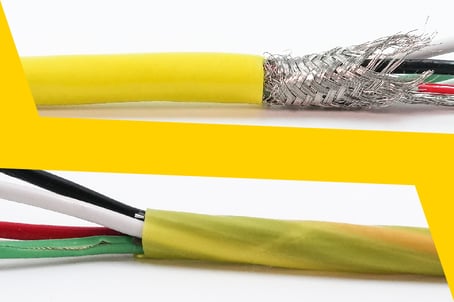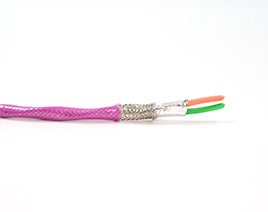
Shielded and unshielded industrial cables are two types used to transmit electrical power or data signals in various industries.
Let's explore the dissimilarities between shielded and unshielded industrial cables:
Shielding: Shielded cables have an additional layer of shielding material, such as aluminum foil or copper braid, which helps protect the cable from electromagnetic interference (EMI) caused by nearby electrical equipment. Unshielded cables do not have this additional layer of shielding.
Types of Shielding

- Foil Shields – Aluminum/Mylar
- Tape Shields – Copper, aluminum, bronze
- Spiral Shields - Bare copper, tinned copper, silvered copper
- Combination Shields – Usually a braid + foil
Cost: Shielded cables are generally more expensive than unshielded cables due to the additional materials and manufacturing processes required to create the shielding layer.
Noise Reduction: Shielded cables can help reduce the amount of noise or interference in the signal being transmitted, improving signal quality and reliability. Unshielded cables are more susceptible to interference, which can cause signal distortion or even complete signal loss.
Flexibility: Unshielded cables are usually more flexible than shielded cables, making them easier to install and maneuver in tight spaces.
Durability: Shielded cables are generally more durable and resistant to damage from external factors such as moisture, temperature, and abrasion. Unshielded cables may be more susceptible to damage from these factors.
The choice between shielded and unshielded industrial cables will depend on the specific requirements of the application. In general, shielded cables may be more suitable for applications where signal quality and reliability are critical, and where there is a high risk of electromagnetic interference. Unshielded cables may be more suitable for applications where flexibility and cost are more important considerations.


